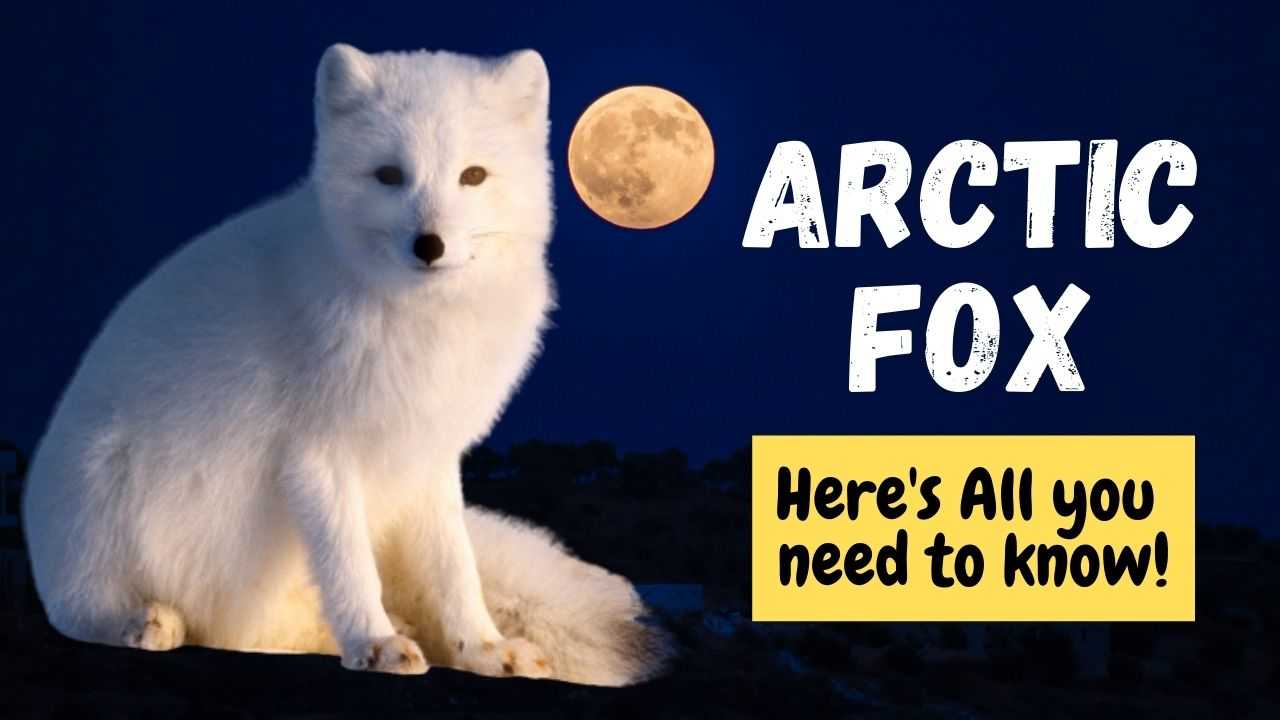About Arctic
The Arctic fox is an omnivorous mammal that belongs to the family of Canid. It is known by several names such as White Fox and Snow Fox. The studies about Arctic foxes tell us that they have a high population with no extinction threats. Moreover, they can change their fur color according to the weather.
Although Arctic foxes are similar to dogs, wolves, and other foxes, they are referred to as the smallest fox species in the Canid family. Their size usually lies between a cat and a dog (between 75 cm to 115 cm long). Arctic foxes are unbelievably strong as they can survive frigid Arctic temperatures as low as -50 degrees celsius.
Geographical Range/Habitat
Arctic Foxes are adaptive to winter, so they are extensively founded in colder climates – including parts of Alaska, Canada, Europe, and Northern Asia. Moreover, they are also native to the Arctic Regions of the Northern Hemisphere, Iceland ( where it is the only native land mammal).
During the winter season, Arctic foxes prefer living in underground lairs. They dig extensive burrows on a hillside or a bank. Each of the burrows has approximately 100 different entrances and most of these burrows are a hundred or more years old, which are passed down from ancestors to new generations. In summer, they live in the tundra at the end of the forest. However, they may also live in caves, dens, and tunnels.
Physical Appearance
Compared to other foxes, Arctic foxes are amongst the smallest foxes that are approximately the size of a well-grown cat. Their compact round necks, shorter legs, muzzled ears, and long bushy tail, helps them to survive frigid cold temperatures. Their small compact bodies minimize the surface area that is exposed to cold air and conserve heat.
Moreover, the coat of the Arctic fox is highly thick and insulating, which allows them to maintain stable body temperature. In addition, their coat has some distinctive features. In summer, the coat of the Arctic fox is thinner and color ranges from brown to bluish brown. In winter, the coat turns thick and white which helps them to camouflage, according to the season.
Size
The Arctic fox’s size is equivalent to a well-grown cat. Male Arctic foxes usually are 80-110 cm in length while female foxes are 71-85 cm in length. In weight, male Arctic foxes weigh between 3.2 – 9.4 kg and females weigh between 1.4 – 3.2 kg.
Longevity/Lifespan
The average lifespan of an Arctic fox is about 7 to 10 years in the wild, while in captivity they may live up to 16 years.
Insulation
The Arctic fox is amongst the animals that have the thickest and warmest coat in the world. Their thick white fur acts as a coat which makes them adaptive to sub-zero climates. Moreover, the long bushy tail plays an important role by providing extra insulation when needed. When the Arctic fox curls up to sleep and to warm its body, it wraps its tail around the body, that plays a role as a blanket or for extra wrap insulation. Furthermore, they also have fur on their paws, which works as traction (allowing them to walk on snow and ice without sliding or slipping ).
Furthermore, these mammals have a special hidden feature in them, which makes them adaptive to survive in below minus celsius temperature. This is because the arteries and veins of this animal are located very close to each other that makes a chain of heat – transferring the warmer blood in the arteries and colder blood in the veins. Additionally, the warm blood passing through the legs also helps the paws to stay warm.
Diet
Arctic foxes are both scavengers and hunters. They are also opportunistic eaters, eating everything that comes across its way dead or alive. However they prefer to eat small mammals such as rats, voles, ground squirrels, and birds. Additionally, they also feed insects, fruits, fishes, and seals.
Sometimes, they also follow polar bears and wolves to eat their leftover prey killings. At times when the food is so scarce, they may eat other animals’ feces as well – which is considered as their dirty secret!
Behavior
Arctic foxes have communal and nomadic behavior. They move from place to place in search of food, shelter, and companionship. They travel approximately 3000 miles over a single winter season. Like other snow animals, Arctic foxes don’t hibernate in winter which allows them to mate twice a year.
Arctic foxes generally spend their lives individually until they mate. During the summer season, they live in a family group that consists of one male, two females, and the baby kits. The second female is there for taking care of the young ones. The male protects its den and brings food for the family.
Arctic foxes communicate with each other through barking and they can easily distinguish the difference between the bark of their family members or outsiders.
Predators
No animal is their biggest predator than humans. Yes, humans are their biggest predators since they hunt them for their beautiful warm coats. In animals – wolves, bears, and wolverines are their predators.
Interesting Facts
- Arctic fox can survive in -70 degrees celsius without shivering.
- Arctic foxes have the warmest pelt found in the Arctic.
- The Arctic fox is a member of the Canidae family.
- They are well-adapted to live in cold harsh temperatures.
- Their small eyes, ears, legs, and body helps them to remain insulated.
- Arctic foxes are the smallest species in the Candid family.
- Arctic foxes are native to Arctic regions of the Northern hemisphere, Canada, Russia, Greenland, Europe, and Iceland.
- They can run at a speed of 50 KM/h.
- They are omnivorous.
- They can have two litters in a season and one mating can bring up to 15 baby kits.
- Arctic foxes are of monogamous behavior, meaning they mate for life.
- A dirty secret about Arctic foxes is that they eat other animals’ feces and sometimes their own waste if there’s a food shortage in the region.
- Arctic foxes change their fur color according to the season.
- Their fur is used to make warm luxurious clothing.








